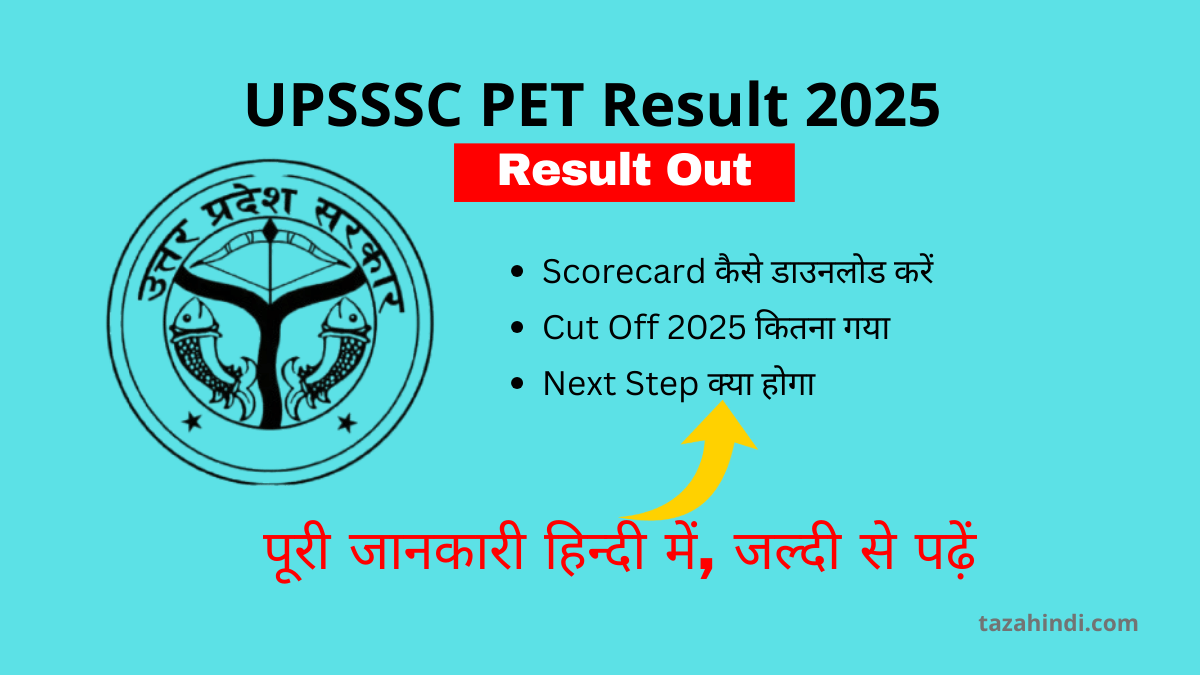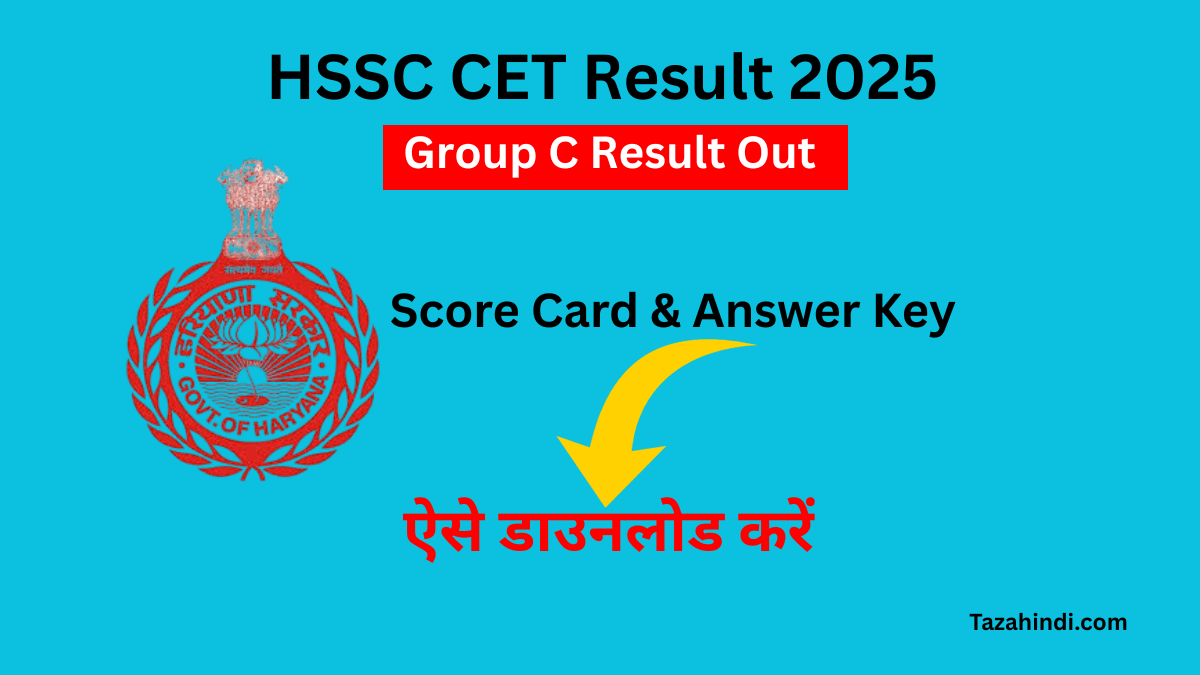प्रोग्रामिंग डेटा के साथ काम करने के बारे में है, और विभिन्न डेटा प्रकारों को समझना किसी भी प्रोग्रामर के लिए महत्वपूर्ण है। जावास्क्रिप्ट, एक लोकप्रिय और बहुमुखी प्रोग्रामिंग भाषा, इसमें कई अंतर्निहित डेटा प्रकार हैं जो आपको विभिन्न प्रकार की सूचनाओं को संग्रहीत और हेरफेर करने की सुविधा प्रदान करते हैं। इस लेख में, मैं आपको समझाऊंगा कि जावास्क्रिप्ट में डेटा टाइप क्या है (What is Data Types in JavaScript), इसके कितने प्रकार है और जावास्क्रिप्ट के डेटा प्रकार को अच्छे से समझने में आपकी मदद करने के लिए कुछ कोडिंग उदाहरणों को हल करेंगे । प्रत्येक डेटा टाइप को विस्तार से कवर करेंगे और कॉमन प्रश्नों को संबोधित करेंगे जो शुरुआती अक्सर सामना करते हैं।
जावास्क्रिप्ट में डेटा टाइप क्या है (What is Data Types in JavaScript) ?
जावास्क्रिप्ट में डेटा टाइप विभिन्न प्रकार के मूल्यों को संदर्भित करते हैं जिन्हें एक जावास्क्रिप्ट प्रोग्राम के भीतर संग्रहीत और इस्तेमाल किया जा सकता है।
जावास्क्रिप्ट में डेटा टाइप की आवश्यकता क्यों है (Why need Data Types in JavaScript) ?
जावास्क्रिप्ट में डेटा टाइप आवश्यक हैं क्योंकि वे उस प्रकार के डेटा को परिभाषित करते हैं जिसे एक प्रोग्राम में संग्रहीत और इस्तेमाल किया जा सकता है। निचे कुछ कारण दिए गए हैं कि जावास्क्रिप्ट में डेटा प्रकार क्यों आवश्यक हैं:
- डेटा प्रतिनिधित्व : डेटा प्रकार हमें विभिन्न प्रकार के डेटा का प्रतिनिधित्व करने और उनके साथ काम करने की अनुमति देते हैं। वे अपनी विशेषताओं और व्यवहार के आधार पर डेटा को वर्गीकृत और व्यवस्थित करने का एक तरीका प्रदान करते हैं।
- मेमोरी आवंटन : डेटा प्रकार किसी विशेष मान को स्टोर करने के लिए आवंटित मेमोरी की मात्रा निर्धारित करते हैं। विभिन्न डेटा प्रकारों की अलग.अलग मेमोरी आवश्यकताएं होती हैं।
- डेटा अखंडता : डेटा प्रकार डेटा की अखंडता को सुनिश्चित करने में मदद करते हैं कि कैसे मूल्यों को संग्रहीत और हेरफेर किया जा सकता है।
- प्रकार की सुरक्षा : जावास्क्रिप्ट एक गतिशील रूप से टाइप की जाने वाली भाषा है, जिसका अर्थ है कि चर किसी भी डेटा प्रकार के मान रख सकते हैं। हालाँकि, डेटा प्रकार प्रकार की जाँच करने और असंगत संचालन को रोकने के लिए दुभाषिया या संकलक को सक्षम करके एक प्रकार की सुरक्षा प्रदान करते हैं। प्रकार की त्रुटियों को विकास के दौरान जल्दी पकड़ा जा सकता है, जिससे रनटाइम त्रुटियों की संभावना कम हो जाती है।
- कार्यक्षमता और व्यवहार : विभिन्न प्रकार के डेटा में विशिष्ट कार्यात्मकताएं और व्यवहार जुड़े होते हैं। उपयुक्त डेटा प्रकार का उपयोग करके, हम विशिष्ट कार्यों को और अधिक कुशलता से पूरा करने के लिए अंतर्निहित कार्यक्षमता और व्यवहार का लाभ उठा सकते हैं।
- इंटरऑपरेबिलिटी : डेटा प्रकार किसी प्रोग्राम या विभिन्न प्रोग्राम के विभिन्न हिस्सों के बीच इंटरऑपरेबिलिटी की सुविधा प्रदान करते हैं। वे डेटा विनिमय के लिए एक सामान्य भाषा प्रदान करते हैं, जिससे डेटा को फ़ंक्शंस, मॉड्यूल और सिस्टम के बीच निर्बाध रूप से पारित किया जा सकता है।
ये भी पढ़ें :जावास्क्रिप्ट में वेरिएबल्स क्या हैं और जावास्क्रिप्ट वेरिएबल्स को कैसे सीखें पूरी जानकारी
जावास्क्रिप्ट में कितने डेटा प्रकार हैं (How many Data Types in JavaScript)?
जावास्क्रिप्ट में कई अंतर्निहित डेटा प्रकार हैं, जिन्हें दो मुख्य समूहों में वर्गीकृत किया जा सकता है, 1) प्रिमिटिव डेटा टाइप और 2) कॉम्प्लेक्स डेटा टाइप ।
प्रिमिटिव डेटा टाइप क्या है (What is Primitive Data Types)?
प्रिमिटिव डेटा टाइप जावास्क्रिप्ट में डेटा के मूल निर्माण खंड हैं। वे अपरिवर्तनीय हैं, जिसका अर्थ है कि एक बार बनने के बाद उनके मूल्यों को बदला नहीं जा सकता है। जावास्क्रिप्ट में निम्नलिखित प्रिमिटिव डेटा टाइप हैं:
- Number
- String
- Boolean
- Null
- Undefined
- Symbol (Introduced in ECMAScript 6)
Number Data Type
नंबर डेटा प्रकार संख्यात्मक मानों का प्रतिनिधित्व करता है। इसमें पूर्णांक, फ़्लोटिंग-पॉइंट नंबर और स्पेशल नंबर जैसे इन्फिनिटी और NaN (Not a Number) शामिल हैं। एक नंबर वेरिएबल घोषित करने के लिए, वेरिएबल नाम के बाद ‘let या ‘const’ कीवर्ड का उपयोग करें और इसे एक संख्यात्मक मान (numeric value) निर्दिष्ट करें।
Example:
let age = 25;
const pi = 3.14;
String Data Type
String डेटा प्रकार वर्णों के अनुक्रम का प्रतिनिधित्व करता है। String सिंगल कोट्स (‘ ’) डबल कोट्स (“ “) या बैकटिक्स ( ) में संलग्न रहते हैं। String को कॉन्कटेनशन करने के लिए आप ‘+’ ऑपरेटर या टेम्प्लेट लिटरल (enclosed in backticks) के साथ String संयोजन का उपयोग कर सकते हैं।
Example:
let name = 'John';
const message = `Hello, ${name}!`;
Boolean Data Type
बूलियन डेटा प्रकार एक लॉजिकल एंटिटी का प्रतिनिधित्व करता है जिसके दो मान हो सकते हैं ‘true’ या ‘false’ । बूलियन अक्सर सशर्त बयानों और नियंत्रण प्रवाह में उपयोग किए जाते हैं।
Example:
let isLogged = true;
const hasPermission = false;
Null Data Type
Null डेटा प्रकार किसी वस्तु मूल्य की जानबूझकर अनुपस्थिति का प्रतिनिधित्व करता है। यह अक्सर यह दर्शाने के लिए प्रयोग किया जाता है कि एक वेरिएबल का कोई मूल्य नहीं है या खाली है।
Example:
let data = null;
Undefined Data Type
Undefined डेटा प्रकार एक वेरिएबल का प्रतिनिधित्व करता है जिसे घोषित किया गया है लेकिन उसे कोई मान निर्दिष्ट नहीं किया गया है। यह वेरिएबल्स के लिए डिफ़ॉल्ट मान है जो initialized नहीं किए गए हैं।
Example:
let variable;
Symbol Data Type
सिंबल डेटा प्रकार एक अद्वितीय पहचानकर्ता का प्रतिनिधित्व करता है जिसे ऑब्जेक्ट प्रॉपर्टी के रूप में उपयोग किया जा सकता है। वस्तुओं में नामकरण विरोध से बचने के लिए अक्सर सिंबल का उपयोग किया जाता है।
Example:
const id = Symbol('unique identifier');
ये भी पढ़ें : जावास्क्रिप्ट में ऑपरेटर्स क्या हैं और जावास्क्रिप्ट ऑपरेटर्स को कैसे सीखें पूरी जानकारी
कॉम्प्लेक्स डेटा टाइप क्या है (What is Complex Data Types)?
इन डेटा प्रकारों का उपयोग मूल्यों के संग्रह या अधिक जटिल डेटा संरचनाओं को संग्रहीत करने के लिए किया जाता है। यह प्रिमिटिव डेटा प्रकारों के विपरीत है, जटिल डेटा प्रकारों में कई मान हो सकते हैं और वे परिवर्तनशील होते हैं, जिसका अर्थ है कि उनके मूल्यों को संशोधित किया जा सकता है। जावास्क्रिप्ट में निम्नलिखित जटिल डेटा टाइप हैं
- Object
- Array
Object Data Type
ऑब्जेक्ट डेटा प्रकार key-value पेयर का एक संग्रह है, जहाँ प्रत्येक मान किसी भी डेटा प्रकार का हो सकता है। ऑब्जेक्ट बहुमुखी हैं और आपको जटिल डेटा संरचनाओं को संग्रहीत और व्यवस्थित करने की सुविधा प्रदान करता हैं।
Example:
let person = {
name: 'John',
age: 25,
isStudent: true
};
Array Data Type
Array डेटा प्रकार का उपयोग एक ही वेरिएबल में एकाधिक मानों को संग्रहीत करने के लिए किया जाता है। सरणियों को तत्वों के संग्रह का आदेश दिया जाता है और 0 से शुरू होने पर अनुक्रमित किया जाता है।
Example:
let fruits = ['apple', 'banana', 'orange'];
ये भी पढ़ें : Node.js क्या हैं और Node.js को कैसे सीखें पूरी जानकारी
जावास्क्रिप्ट डेटा टाइप को कैसे सीखें (How to Learn Data Types of JavaScript by solving Coding Questions) ?
आपके जावास्क्रिप्ट डेटा टाइप की समझ को ओर मजबूत करने के लिए, चलिए जावास्क्रिप्ट डेटा टाइप के ऊपर निचे दिए गए हर एक कोडिंग प्रश्नों को हल करते हैं:
Q1. Write a JavaScript program to calculate the area of a rectangle.
Prompt the user for the length and width of the rectangle and output the result.
Solution:
// Step 1: Prompt the user for the length and width of the rectangle
let length = prompt('Enter the length of the rectangle:');
let width = prompt('Enter the width of the rectangle:');
// Step 2: Convert the input values from strings to numbers
length = parseFloat(length);
width = parseFloat(width);
// Step 3: Calculate the area of the rectangle
let area = length * width;
// Step 4: Output the result
console.log('The area of the rectangle is: ' + area);
Explanation:
- Step 1: We use the ‘prompt()’ function to display a dialog box and prompt the user to enter the length and width of the rectangle. The entered values are stored in the variables ‘length’ and ‘width’.
- Step 2: Since the ‘prompt()’ function returns the user input as strings, we use the ‘parseFloat()’ function to convert the string values to floating-point numbers (decimals).
- Step 3: We calculate the area of the rectangle by multiplying the length and width, and store the result in the variable ‘area’.
- Step 4: We use the ‘console.log()’ function to output the calculated area of the rectangle to the console.
ये भी पढ़ें : What are the Top 10 Programming Languages for Beginners
Q2. Write a JavaScript program that takes a user’s name as input and outputs a personalized greeting message.
Solution:
// Step 1: Prompt the user for their name
let name = prompt('Enter your name:');
// Step 2: Create the greeting message
let message = 'Hello, ' + name + '!';
// Step 3: Output the greeting message
console.log(message);
Explanation:
- Step 1: We use the ‘prompt()’ function to prompt the user to enter their name, and store the entered value in the variable ‘name’.
- Step 2: We create the greeting message by concatenating the user’s name with the string ‘Hello, ‘ and the exclamation mark ‘!’. The resulting message is stored in the variable ‘message’.
- Step 3: We use the ‘console.log()’ function to output the greeting message to the console.
ये भी पढ़ें : What are the Top 10 Web Development Frameworks for Building Websites
Q3. Write a JavaScript program that checks if a given number is even or odd.
Prompt the user for a number and output whether it is even or odd.
Solution:
// Step 1: Prompt the user for a number
let number = prompt('Enter a number:');
// Step 2: Convert the input value from a string to a number
number = parseInt(number);
// Step 3: Check if the number is even or odd
if (number % 2 === 0) {
console.log(number + ' is even.');
} else {
console.log(number + ' is odd.');
}
Explanation:
- Step 1: We use the ‘prompt()’ function to prompt the user to enter a number, and store the entered value in the variable ‘number’.
- Step 2: Since the ‘prompt()’ function returns the user input as a string, we use the ‘parseInt()’ function to convert the string value to an integer.
- Step 3: We use an ‘if’ statement to check if the number is divisible by 2 (i.e., even). If the remainder of the division (‘number % 2’) is equal to 0, it means the number is even. We output the result accordingly using ‘console.log()’. If the remainder is not 0, the number is odd.
ये भी पढ़ें : PM Krishi Sinchai Yojana क्या है, इसके उद्देश्य, विशेषताएं, लाभ, पात्रता मानदंड और आवेदन कैसे करें
Q4. Write a JavaScript program that checks if a variable is null.
Prompt the user for a variable value and output whether it is null or not.
Solution:
// Step 1: Prompt the user for a variable value
let userInput = prompt('Enter a variable value:');
// Step 2: Check if the variable is null
if (userInput === null) {
console.log('The variable is null.');
} else {
console.log('The variable is not null.');
}
Explanation:
- Step 1: We use the ‘prompt()’ function to prompt the user to enter a variable value, and store the entered value in the variable ‘userInput’.
- Step 2: We use an ‘if’ statement to check if the ‘userInput’ variable is strictly equal to ‘null’. If it is, we output the message “The variable is null.” using ‘console.log()’. Otherwise, we output “The variable is not null.”
ये भी पढ़ें : Mojo Programming Language क्या हैं पूरी जानकारी
Q5. Write a JavaScript program to check if a variable is undefined.
Prompt the user for a variable value and output whether it is undefined or not.
Solution:
// Step 1: Prompt the user for a variable value
let userInput = prompt('Enter a variable value:');
// Step 2: Check if the variable is undefined
if (typeof userInput === 'undefined') {
console.log('The variable is undefined.');
} else {
console.log('The variable is not undefined.');
}
Explanation:
- Step 1: We use the ‘prompt()’ function to prompt the user to enter a variable value, and store the entered value in the variable ‘userInput’.
- Step 2: We use an ‘if’ statement to check if the ‘typeof’ the ‘userInput’ variable is equal to ‘’undefined’’. The ‘typeof’ operator returns a string representing the data type of a variable. If it is ‘’undefined’’, we output the message “The variable is undefined.” using ‘console.log()’. Otherwise, we output “The variable is not undefined.”
ये भी पढ़ें : राष्ट्रीय कृषि विकास योजना क्या हैं, उद्देश्य, विशेषताएं, लाभ, पात्रता मानदंड और आवेदन कैसे करें पूरी जानकारी
Q6. Write a JavaScript program that demonstrates the use of symbols.
Create an object with a property that uses a symbol as its key and output the value associated with that property.
Solution:
// Step 1: Create a new symbol
const mySymbol = Symbol('myKey');
// Step 2: Create an object with a symbol key
const myObject = {
[mySymbol]: 'Value associated with the symbol'
};
// Step 3: Output the value associated with the symbol key
console.log(myObject[mySymbol]);
Explanation:
- Step 1: We use the ‘Symbol()’ function to create a new symbol and assign it to the constant variable ‘mySymbol’. The optional description passed to the ‘Symbol()’ function is a textual description of the symbol, useful for debugging purposes.
- Step 2: We create an object called ‘myObject’ with a property that uses the ‘mySymbol’ as its key. The square brackets notation (‘[mySymbol]’) allows us to use the symbol as a computed property key.
- Step 3: We output the value associated with the symbol key ‘mySymbol’ by accessing it using the square brackets notation ‘myObject[mySymbol]’. The value is printed to the console using ‘console.log()’.
ये भी पढ़ें : गूगल बार्ड क्या है पूरी जानकारी
Q7. Write a JavaScript program that creates an object representing a car.
Prompt the user for the car’s make, model, and year, and output the car’s details.
Solution:
// Step 1: Prompt the user for the car's make, model, and year
let make = prompt('Enter the car make:');
let model = prompt('Enter the car model:');
let year = prompt('Enter the car year:');
// Step 2: Create an object representing the car
let car = {
make: make,
model: model,
year: year
};
// Step 3: Output the car's details
console.log('Car Details:');
console.log('Make: ' + car.make);
console.log('Model: ' + car.model);
console.log('Year: ' + car.year);
Explanation:
- Step 1: We use the ‘prompt()’ function to prompt the user to enter the car’s make, model, and year. The entered values are stored in the variables ‘make’, ‘model’, and ‘year’, respectively.
- Step 2: We create an object called ‘car’ using object literal notation. The object has properties ‘make’, ‘model’, and ‘year’, and the values are assigned from the user’s input variables.
- Step 3: We use ‘console.log()’ to output the car’s details. The make, model, and year are accessed from the ‘car’ object using dot notation (‘car.make’, ‘car.model’, ‘car.year’).
Q8. Write a JavaScript program that takes an array of numbers as input and outputs the sum of all the numbers in the array.
Solution:
// Step 1: Prompt the user for an array of numbers
let input = prompt('Enter an array of numbers, separated by commas:');
let numbers = input.split(',').map(Number);
// Step 2: Calculate the sum of the numbers
let sum = 0;
for (let i = 0; i < numbers.length; i++) {
sum += numbers[i];
}
// Step 3: Output the sum
console.log('The sum of the numbers is: ' + sum);
Explanation:
- Step 1: We use the ‘prompt()’ function to prompt the user to enter an array of numbers, separated by commas. The input string is then split into an array using the ‘split()’ function, and each element is converted to a number using ‘map(Number)’.
- Step 2: We initialize a variable ‘sum’ to 0. Then, using a ‘for’ loop, we iterate through each number in the ‘numbers’ array and add it to the ‘sum’ variable.
- Step 3: Finally, we use ‘console.log()’ to output the sum of the numbers to the console.
निष्कर्ष (Conclusion)
प्रभावी और कुशल कोड लिखने के लिए जावास्क्रिप्ट डेटा प्रकारों को समझना आवश्यक है। इस लेख में, हमने Primitive डेटा प्रकारों (number, string, Boolean, null, undefined और symbol) के साथ-साथ जटिल डेटा प्रकारों (object और array) के बारे में पूरे बिस्तार से जानकारी दी है । प्रत्येक डेटा प्रकार की बेसिक को अच्छे से समझने में आपकी सहायता के लिए हमने चरण.दर.चरण निर्देश और कोडिंग उदाहरणों को हल किया है ।
अपनी समझ को ओर मजबूत करने के लिए इन अवधारणाओं को लगातार अभ्यास करते रहें। प्रोग्रामिंग एक पुनरावृत्त प्रक्रिया है, और जितना अधिक आप कंटेंट के साथ जुड़ेंगे, उतना ही बेहतर प्रोग्रामर बनेंगे।
मुझे उम्मीद है कि इस लेख ने आपको जावास्क्रिप्ट डेटा प्रकारों में एक ठोस आधार प्रदान किया है। यदि आपके कोई और प्रश्न हैं या किसी विषय पर स्पष्टीकरण की आवश्यकता है, तो बेझिझक पूछें।



